It’s time for another Repotting Diaries here at HPH + in this instalment I’m going to be carrying out some plant rescues, alongside a spot of repotting rejuvenation for my Ficus elastica tineke gang that have not been loving life in the cottage. Plus, I’ll be repotting some other houseplants that would very much like some attention, such as my variegated Aspidistra + Clivia miniata.
If this is the first post in this series that you’ve seen, these posts are intended to be short + ‘behind the scenes’ in style; showing a more everyday + relaxed view of what it is like to live with a lot of plants. In addition, if you have any of these plants it might help to see how I’ve repotted mine + things to look out for. Have a browse through the other posts in this series if you want to get in the mood for some plant care: there’s a tab at the top of the homepage.
Ficus elastica tineke gang
I’ve got three pots of variegated rubber plants around the place here at HPH — it’s the painterly leaves + colours that just appeal to me so whenever I spot a good one at a good price, I can’t resist! My Ficus elastica tineke gang existed as 5 separate pots around 5+ years ago but sometime after that (I think perhaps 2 years ago), I decided to plant my 3 small plants in a pot together. They were rescue plants that had bugs + needed some care, so I nurtured them back to health + when they were looking better, I decided to plant them together + chop the tops off to encourage the plants to branch. I’ll insert an instagram post here to show how it looks:
As I said in the IG post above, I’d been contemplating combining my larger plants in this way for quite some time. Since moving last year, they haven’t enjoyed the lack of light in the cottage much + growth has been very slow + a few leaves have perished at the base. This was making the plants look a bit gangly so I decided that I would try to perk things up a bit by planting them together whilst repotting this time around…
I think it’s important to show the reality of keeping a houseplant collection, which means that not all the plants look great all the time. These photos are a very real reflection of how droopy + sad-looking my large Ficus plants were after a long winter! BUT this doesn’t mean they can’t be rejuvenated + that’s why I like to share the progress with you here on HPH — whether that’s propagating, chopping or repotting, there’s usually a way to improve the situation.
Here you can see how the two stems look in the pot, along with their corresponding supports before filling in with potting mix:
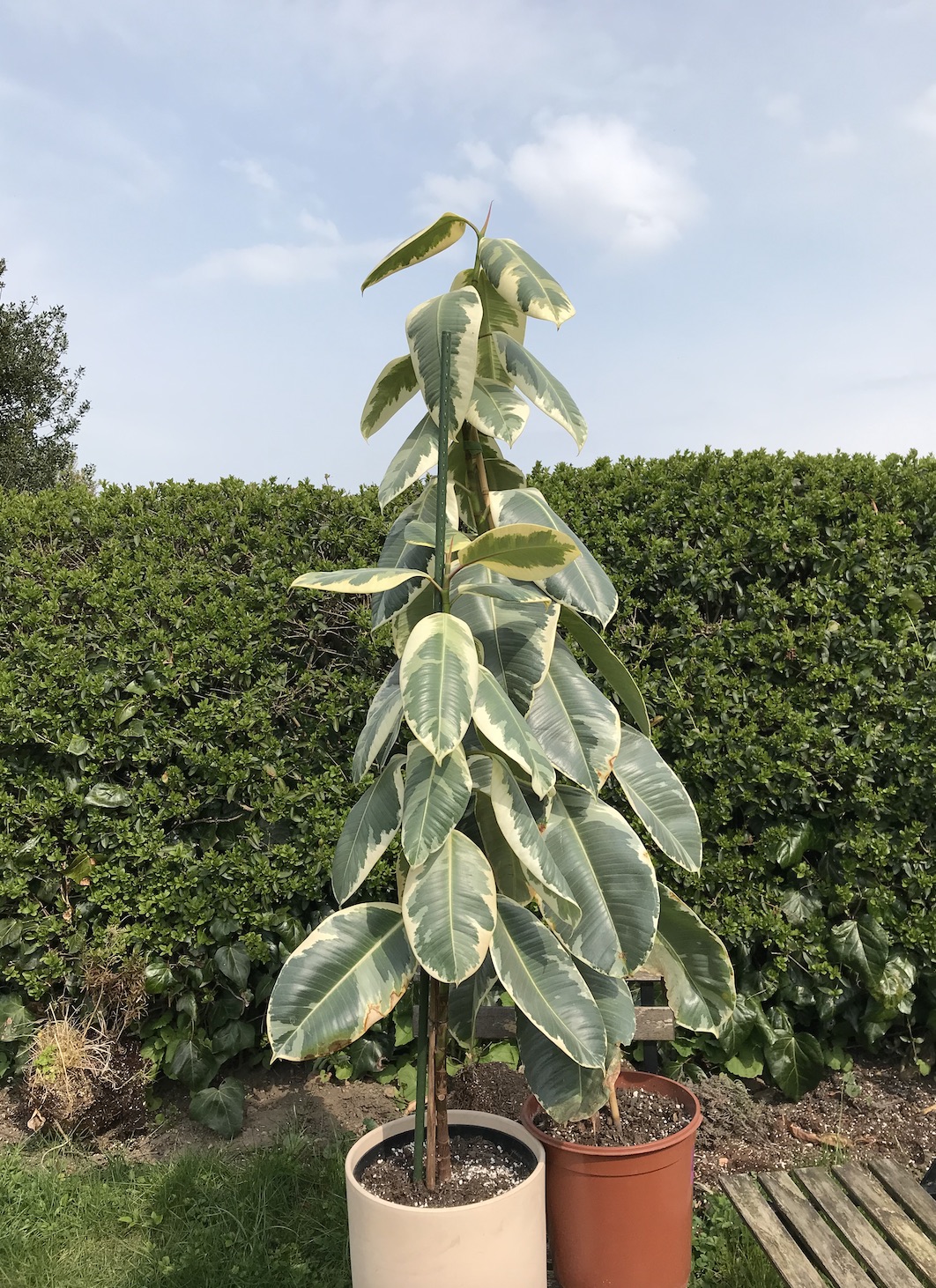


Now, I’m quite aware it looks a bit… eccentric at the moment, but Ficus plants take time to adjust after repotting, particularly if they’ve just woken up from dormancy like mine. I’ve given the leaves a good clean + watered it in + placed it in the brightest position downstairs near my south east window. The problem with the cottage is that because the ceilings are lower than an average ceiling, the tops of my taller plants like these struggle to get enough light. But hopefully I won’t be in this place past the summer…by this point, moving can’t come quick enough for me + my plants!

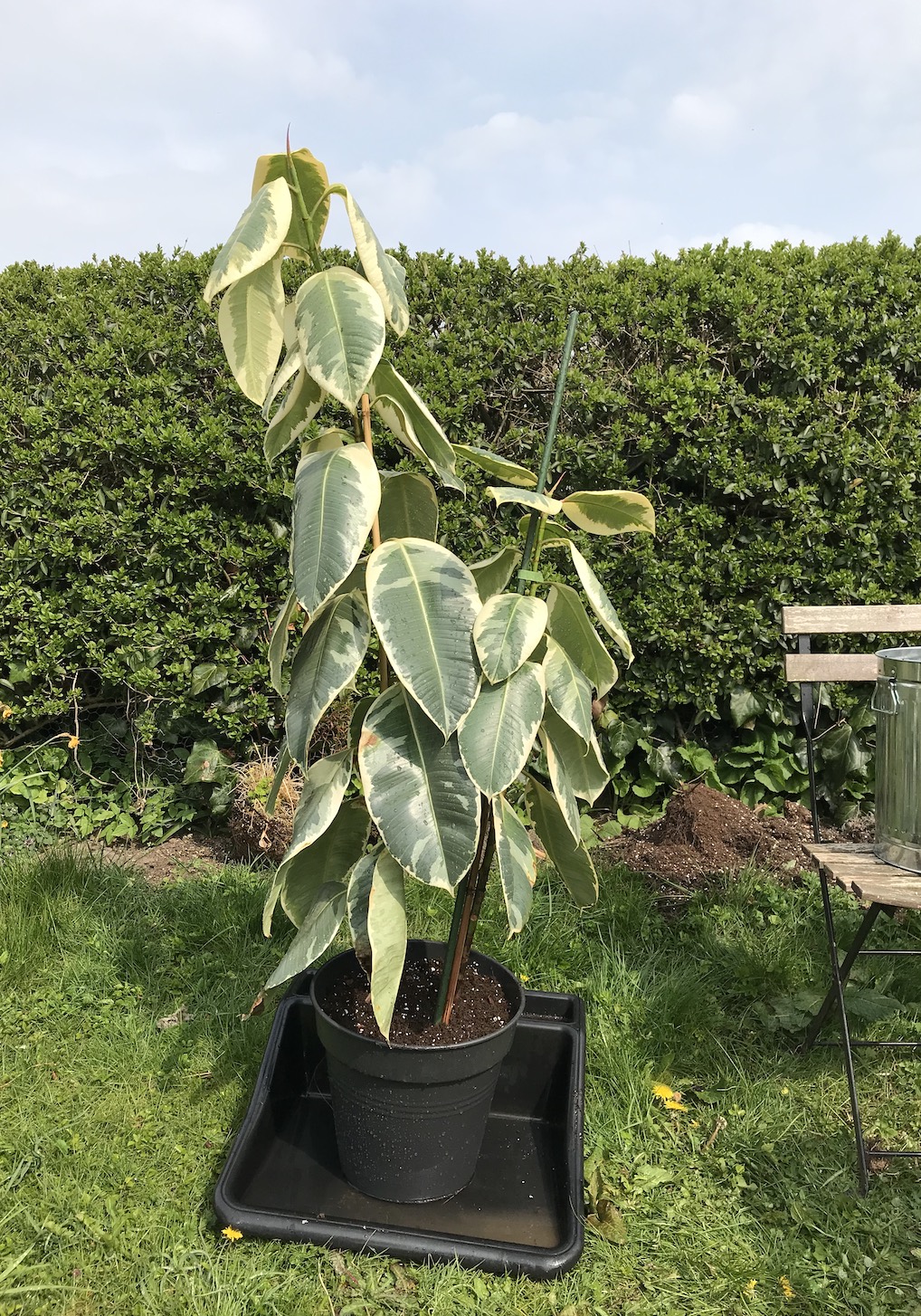
Update: just as I was about to publish this post, I thought I’d add in here that these plants are looking so much better and both are throwing out new leaves + looking a lot less droopy! I’ll take a photo to share on instagram soon.
Aspidistra okame
Let me introduce the slowest growing plant in my collection… it’s my Aspidistra Okame, aka. a variegated Aspidistra. Any regular readers will know of my attachment to Aspidistras + whilst waiting for a new leaf is slower than watching paint dry, when one does appear it’s beautiful. If there’s one type of houseplant that has taught me about patience, it’s my Aspidistra gang.
It’s very true that these plants can happily stay in the same planter for YEARS + YEARS as they are so tolerant of neglect. I haven’t repotted this one for a number of years so I thought it was about time I checked on the roots. I loosened the plant from the pot + noticed that some roots were starting to grow out of the bottom! I really love the way Aspidistra roots develop, you can see their growth habit here below right…
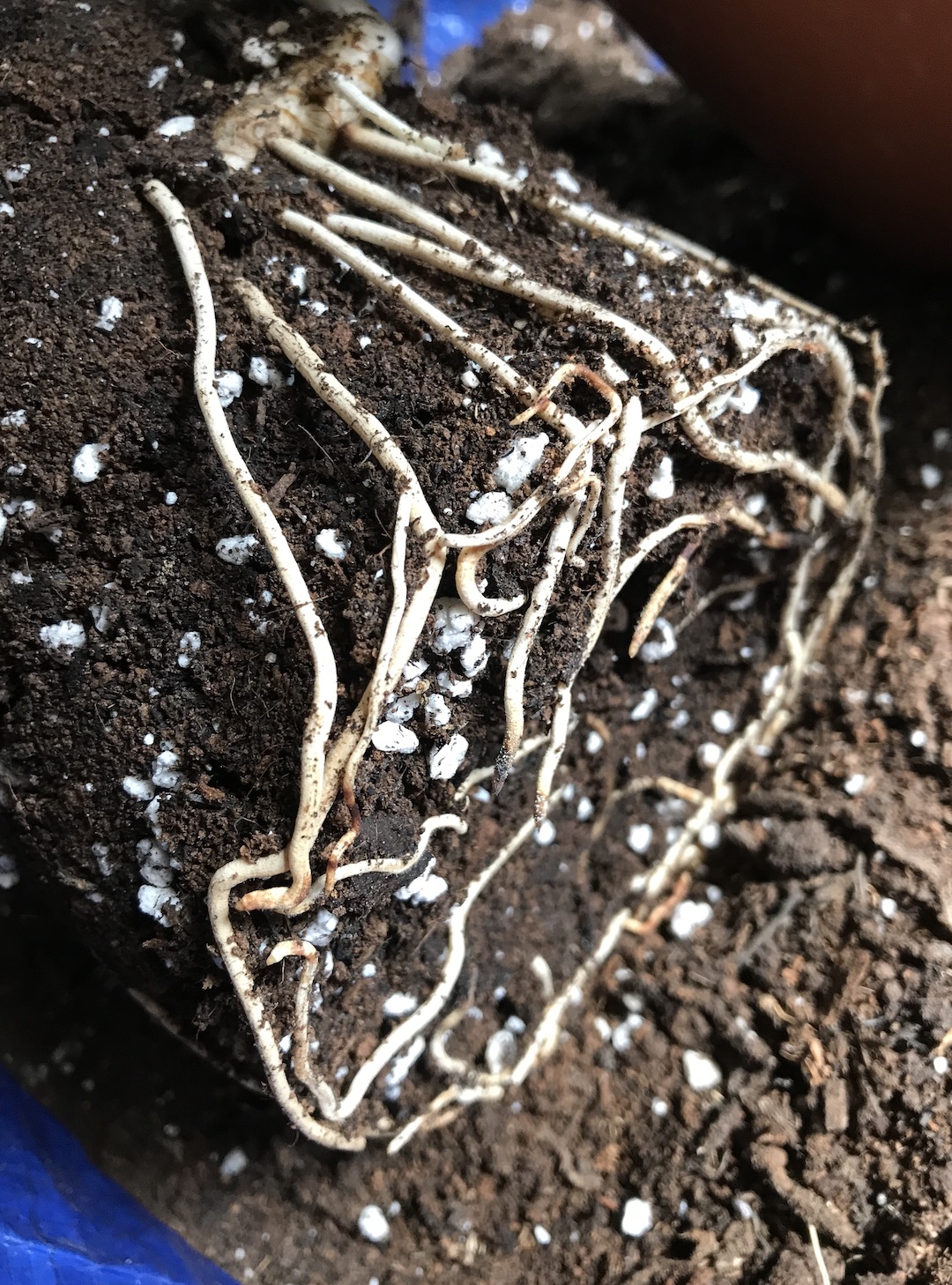

I then carried out some plant-pot-musical-chairs because I wanted to use a terracotta planter that one of my other Aspidistra plants had been living in for the last 3 years as the size was perfect. Luckily, this plant also needed repotting — it’ll be in the next Repotting Diaries post!
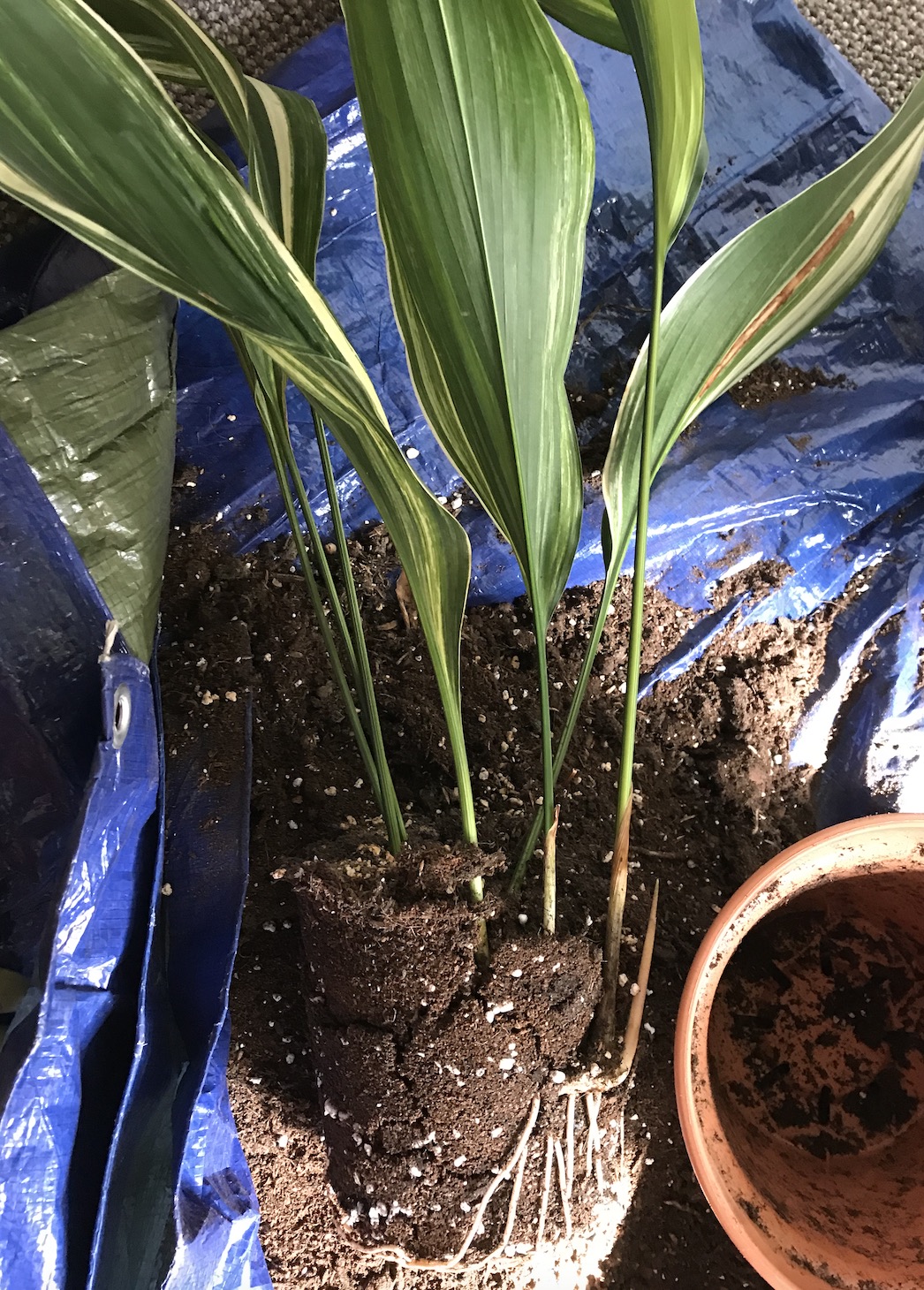

Rhapidophora tetrasperma
This one is a good example of why a bigger pot isn’t always better!

My Rhaphidophora tetrasperma was doing ok but growth had slowed as the roots were circling around the bottom of the pot. I was planning on using a larger pot I thought would work, but when I started planting it, I felt that there was a bit too much room + it would be too big of a jump. So, I ended up potting the plant back into the same planter, just with a fresh layer of potting mix at the bottom! This was actually all the plant really required at this point + the new potting mix lifted the plant higher up in the pot, whilst also offering some space for new growth here. Rhaphidophora tetrasperma are fast growing plants in an optimal environment + do require more regular repotting than your average, so be prepared for this if you are tempted by these lovely leaves!
Here’s my care guide for this plant if you fancy reading more on that.


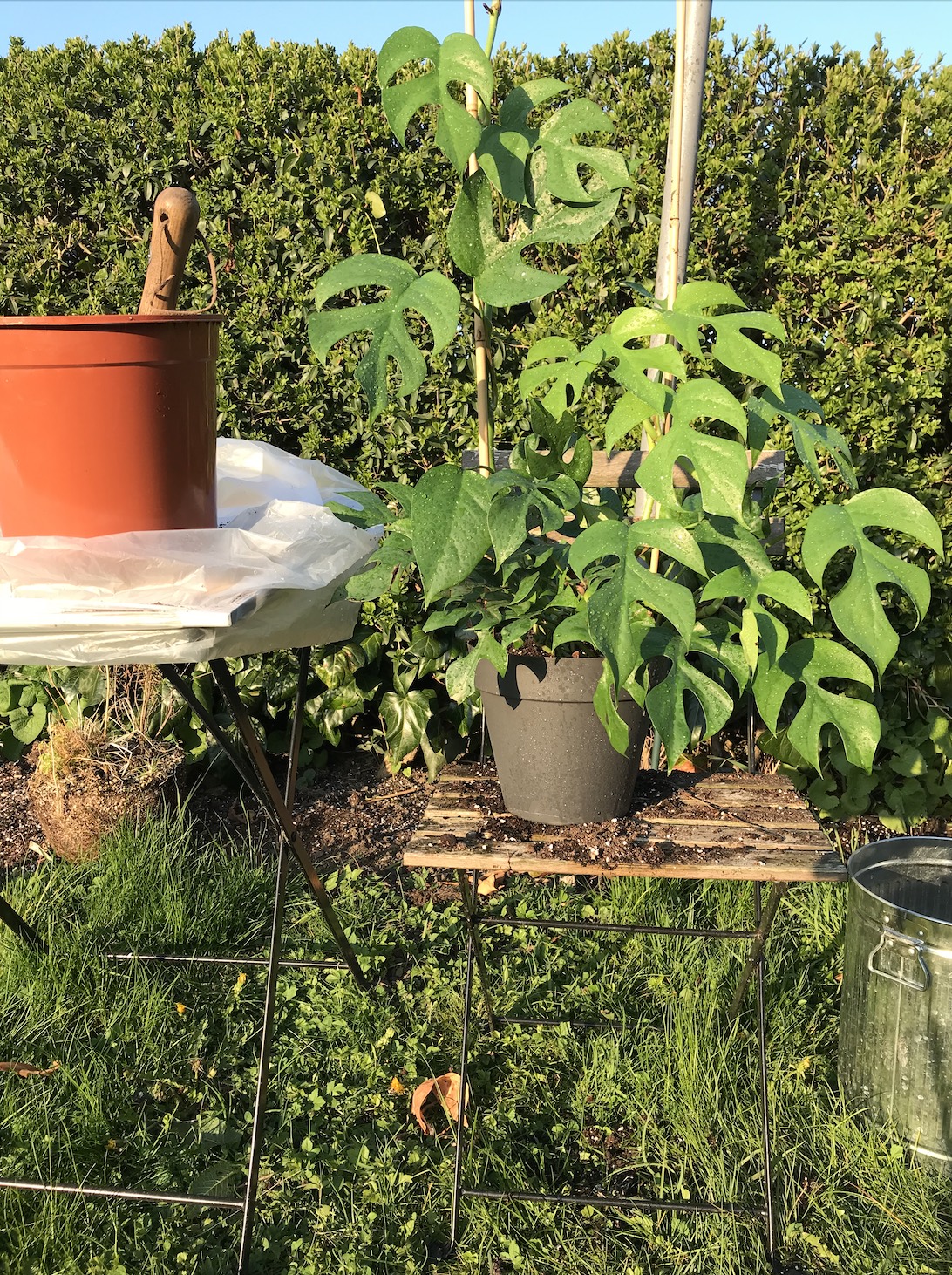
Yucca rescue
Oh dear, look at this poor Yucca! What a sorry state it is in with those roots all woven together like a basket. I’m going to take it out of the pot + loosen the roots before pruning the dried ones off + stripping back the yellow leaves. After this, I’ll give it a good wash + water before taking it back upstairs. We shall see if it will bounce back!

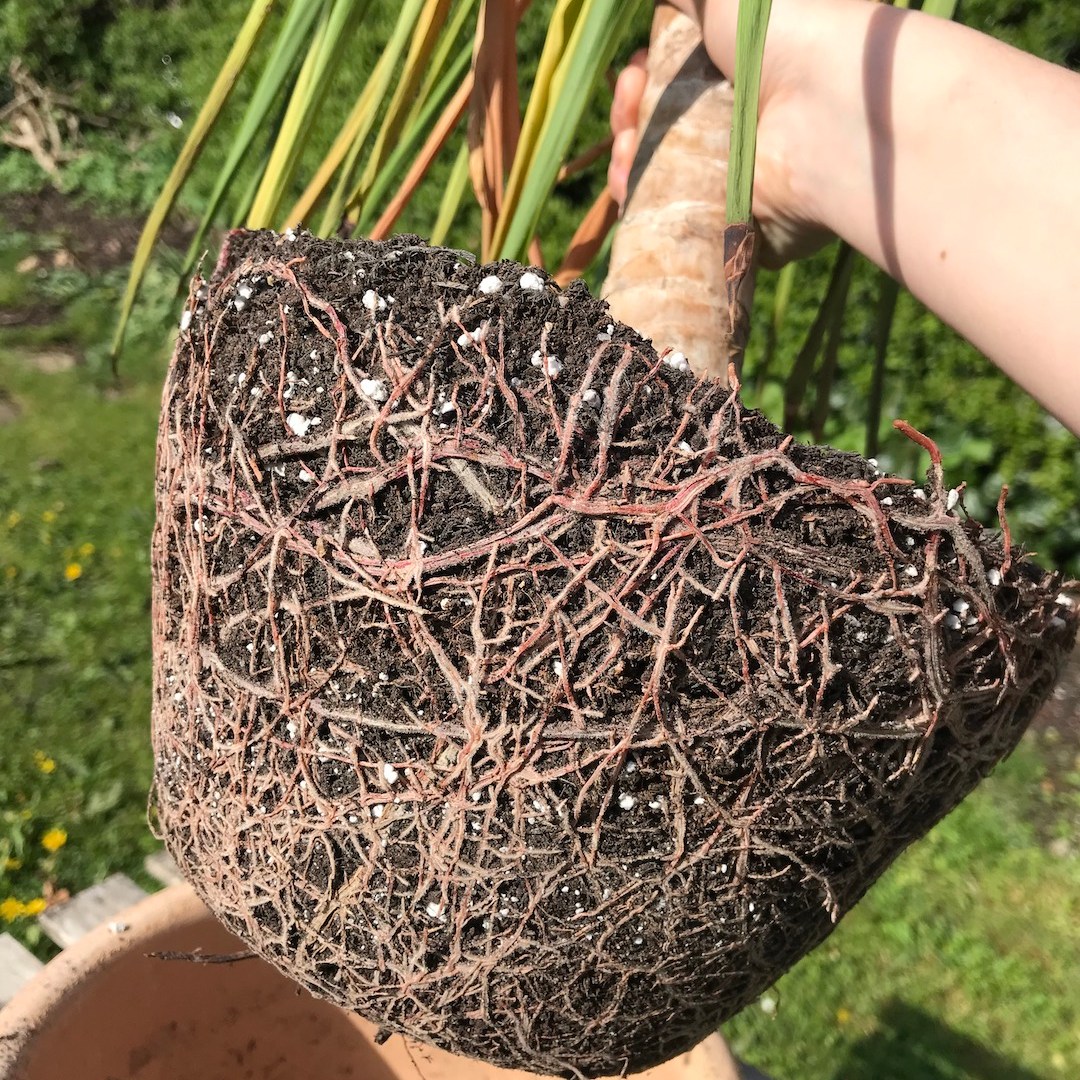
I’m going to chop off these completely dried up leaves + whilst it might look bare, I always think plants like these end up looking somewhat gangly until new growth re-appears. I’ll keep it somewhere warm + bright + share an update in a few months!
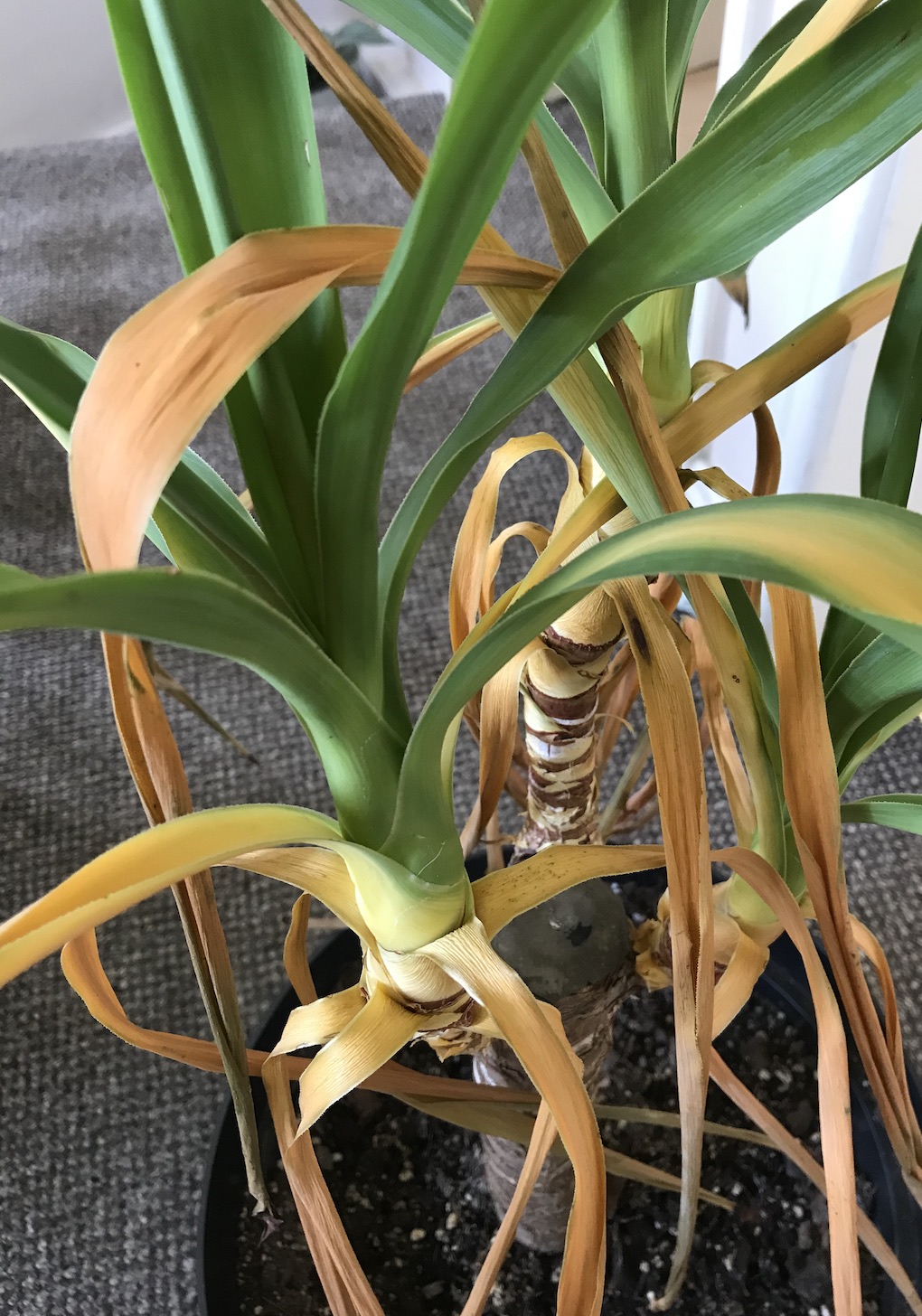

Here is how the plant is looking after a haircut… I only prune off the leaves when they are completely dried:

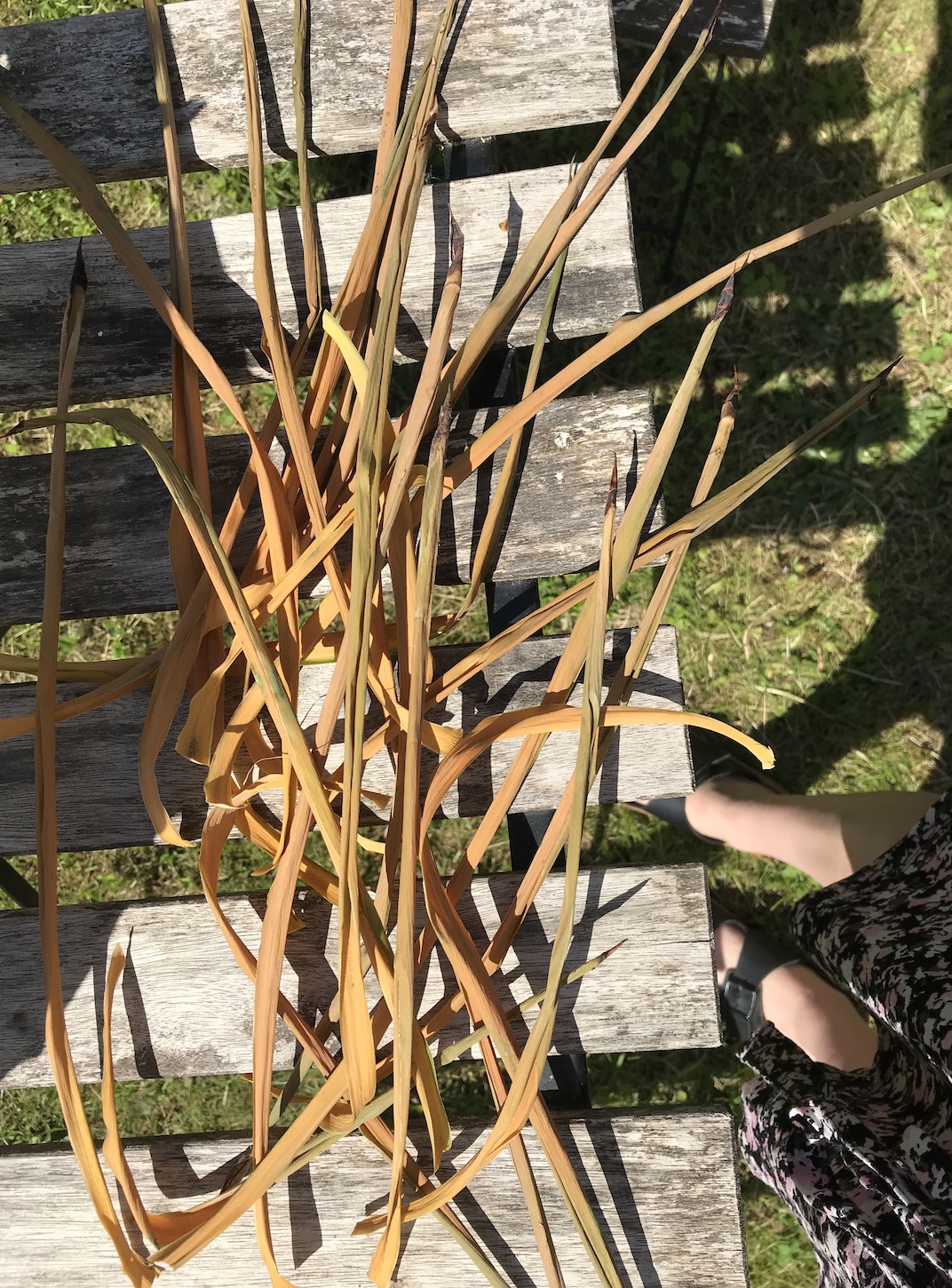

Haworthia rescue
This Haworthia is probably the toughest plant I own + one of the oldest too. I’ve had this for longer than I can remember + it’s always lived in a green planter from Anthropologie. It’s slowly been getting bigger + bigger, to the point where I couldn’t find a way into the potting mix to water it properly! So I decided to see how it was doing + separate some of the baby plants that have been growing around the base of the plant — I made up another little plant with these which you can see below right. Despite not having loads of succulents, I do like one that has a compact growth habit like this, that seem to thrive on neglect!



Dracaena trifasciata ‘Black Coral’ Snake plant
Out of my snake plant family, this one is my favourite. I just love the dark leaves that really stand out when next to other green or the classic green + yellow Dracaena trifasciata (formerly Sansevieria) varieties. This one was not looking the best after winter as it was in quite a cold position, which meant that it hardly needed any watering. Come Springtime though, the potting mix was a bit depleted + in need of a freshen up, so I removed the leaves from the planter + checked it over for pests. If you are repotting your snake plants too, this is the ideal time to look closely in good light at the base of the plant where the new growth forms to ensure there’s nothing lurking around. All was ok here, but some of the newer growth that had been popping up was quite spindly due to a lack of light.
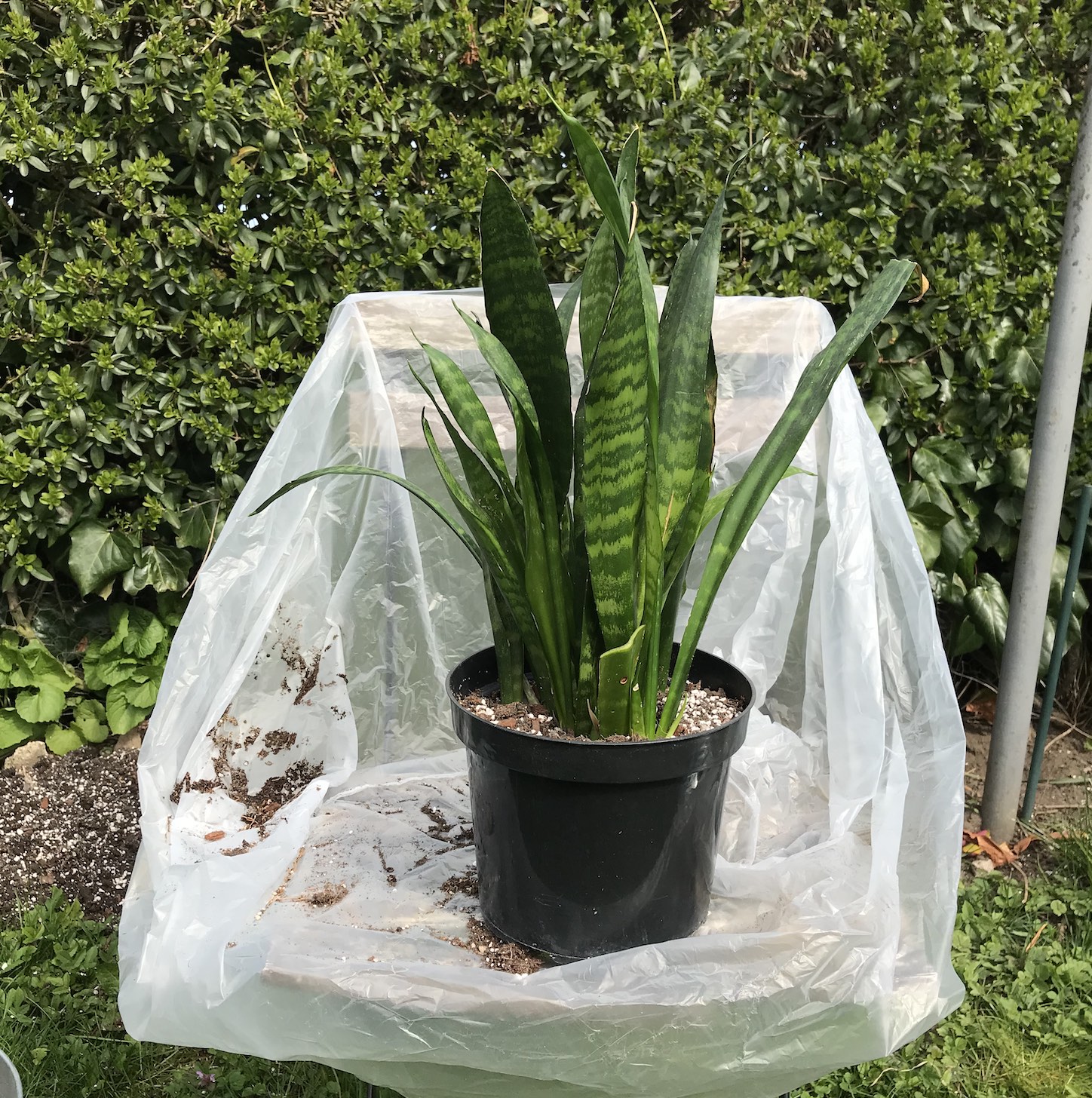
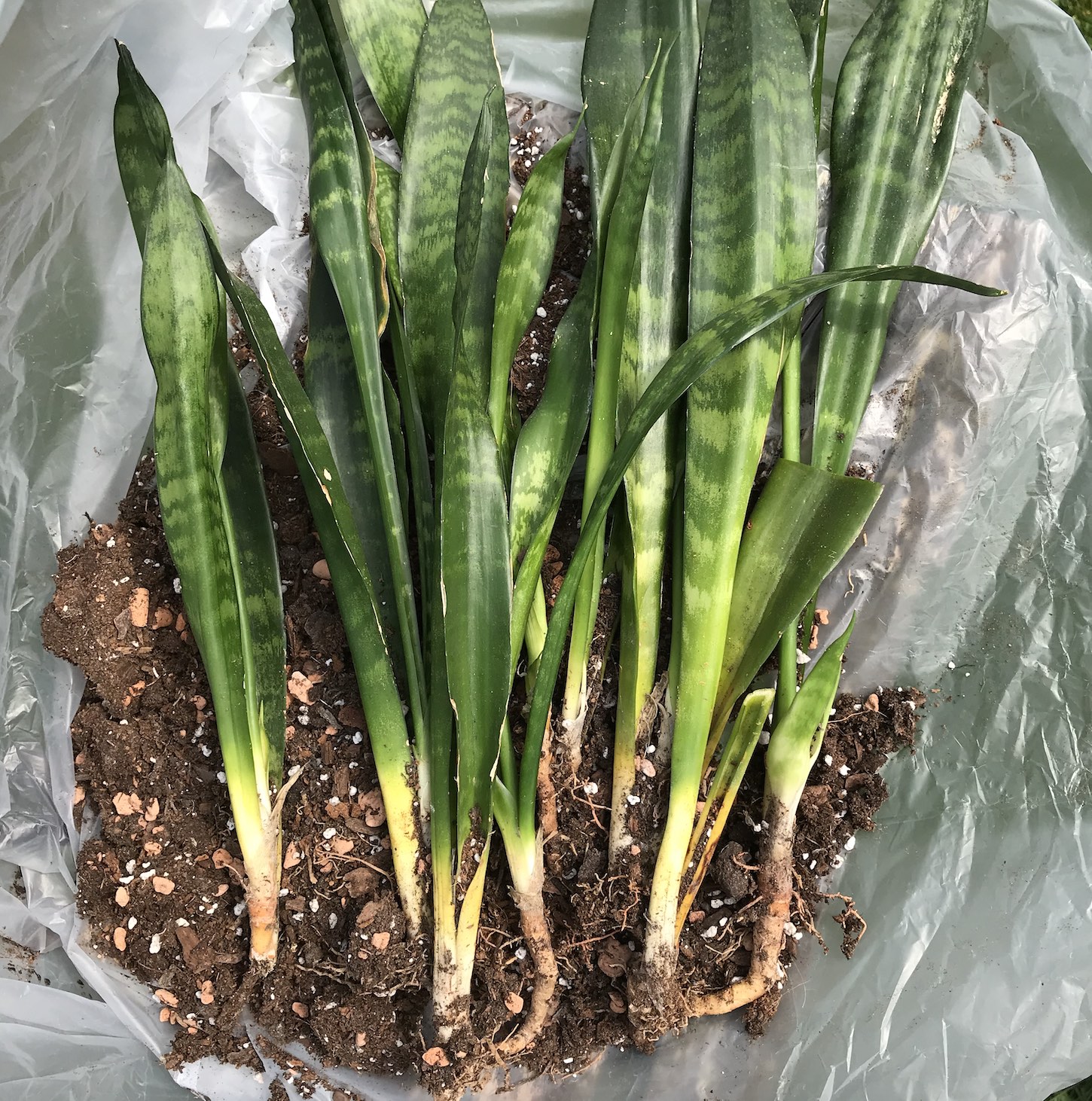
I decided to remove some of the damaged stems + re-plant in a different shaped pot — slightly smaller, but taller to give the stems a deeper planter to grow into, whilst keeping the top of the plant neat looking. The shape of your pot really can make a difference so always try to match things up before hand, instead of just grabbing one + thinking ‘It’ll do’. In a wide topped pot the stems looked a bit ‘meh‘ but in a narrower, deeper planter they seemed to stand up tall + feel more sculptural + full.


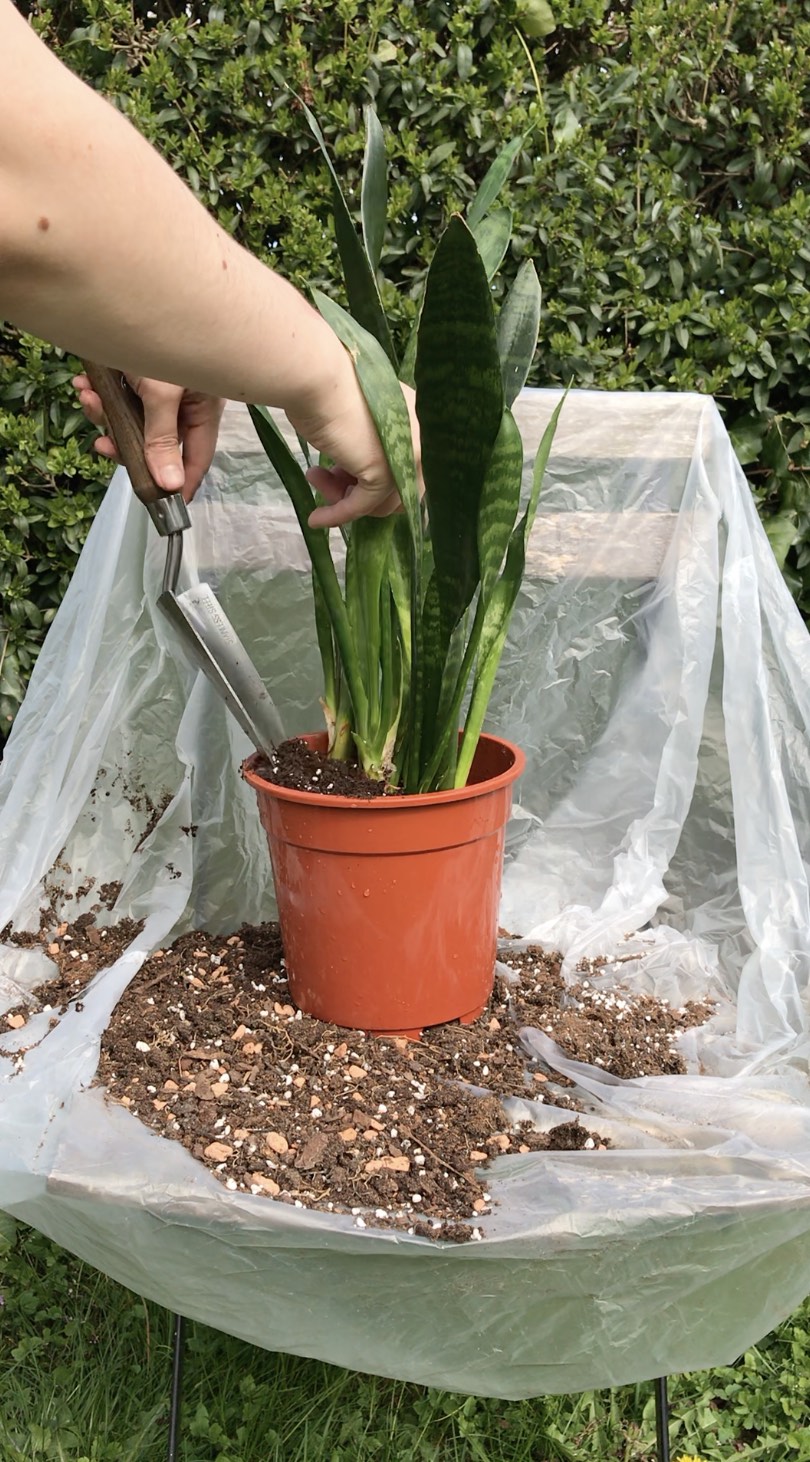

Clivia miniata
Just like the Strelitzia roots in the last Repotting Diaries, Clivia roots are something to behold! They are SO LONG + have such an interesting growth habit too. If you’ve not grown a Clivia miniata before, you might get a shock the first time you decide to re-pot it because by seeing the plant from above soil level, I don’t think you would anticipate just how show-stopping + sizeable these roots can be!

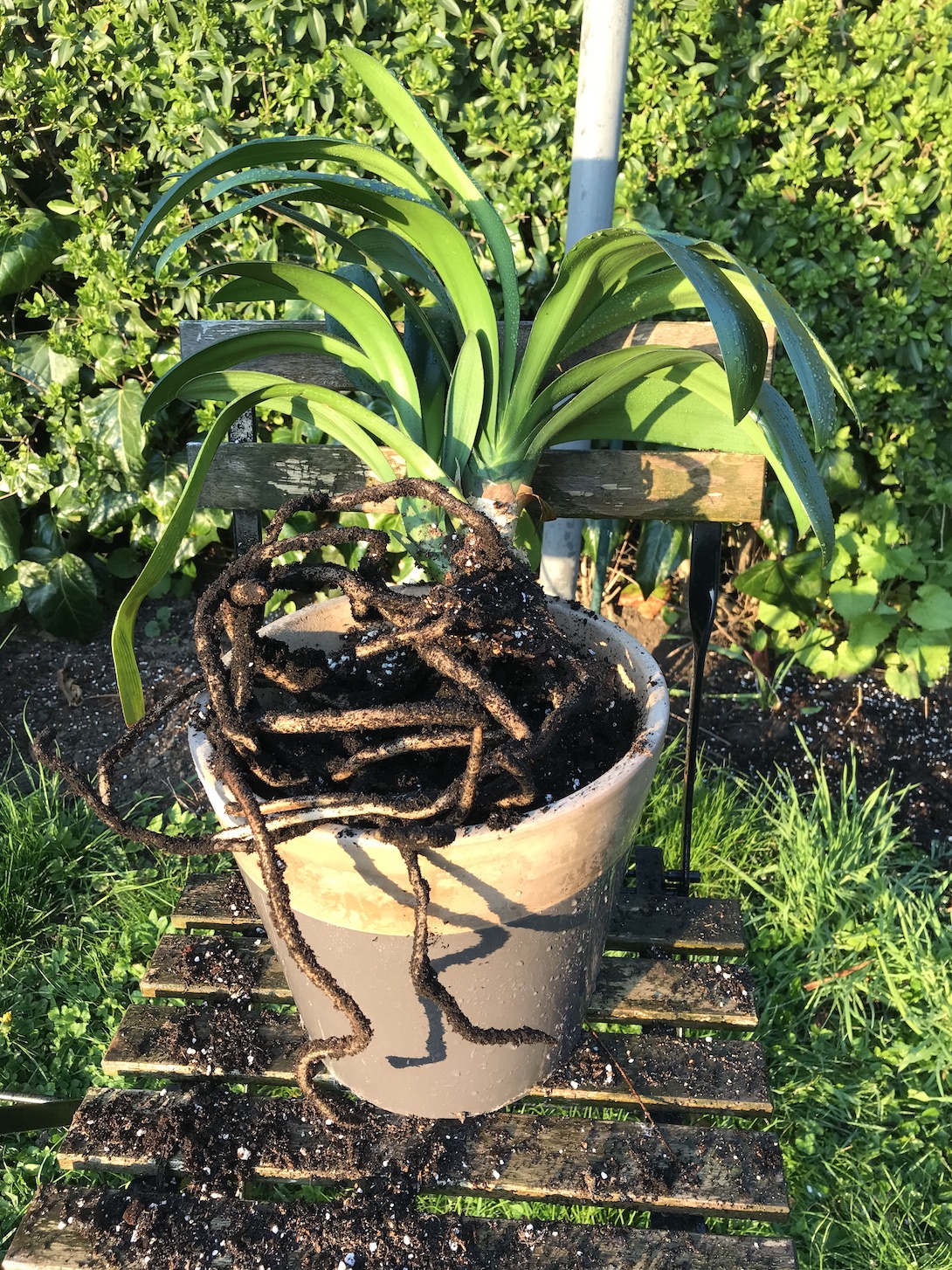
I can’t wait to give this plant some more light in my next place, it’s coped surprisingly well sitting on the stairs around 1.5 metres from a north-west facing, draughty window. It’s not really grown all that much, but it’s still looking healthy + there’s another plant forming at the base, which I was tempted to separate. For now though, I decided to leave it as it was until I notice some more growth + it might be something that I opt to do later in the growing season, or after I move. My plant hasn’t bloomed for me yet, but I sold these in the plant shop a few years ago + the tray was in bloom + they looked magnificent!

Conclusion
In case you were thinking …why has Laura got so much repotting to do?! — there is a reason of course! I always like to stress that there’s no need to re-pot your houseplants if they don’t need repotting. Repotting many of mine has been long overdue because prior to relocating some 14 months ago, it was winter + I don’t generally re-pot in winter. Then, after moving, the plants took their time to adapt to a new environment (read: dark, a bit damp + very cold — basically not brilliant) + some like my Ficus elastica tineke in this post, did not fare well. I waited quite a while until repotting the ones that really needed it last year, but for my slower growers, it will have been 2/3years since they’ve been repotted. After their toughest winter yet with some temperatures hitting single digits indoors, there were many that looked quite battered as they entered Spring 2021. So I’m taking this time to properly check through my plant gang in readiness for moving again a little later in the year. Something as simple as a potting mix refresh can really help enliven your plants if they’ve been sitting in the same planter for as long as you can remember… like my nan’s Aspidistra!
I hope you enjoyed seeing what’s been on my houseplant potting bench + there will be some related posts over on instagram + pinterest over the next few weeks too. If you’d like to see more on the potting mix I like to use with my houseplants, then here’s the link to my post on that.
Here are some related pins to share or save with someone who might enjoy it:

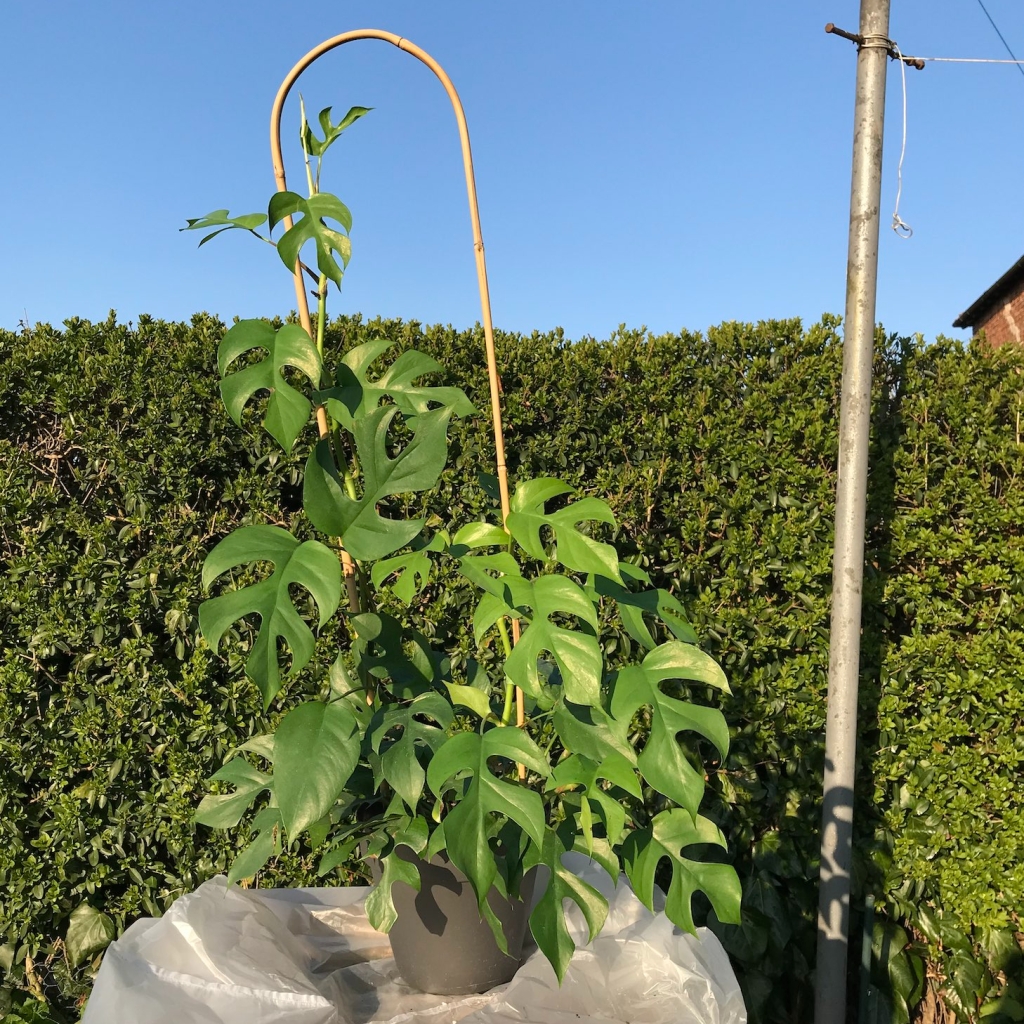
Leave a Reply